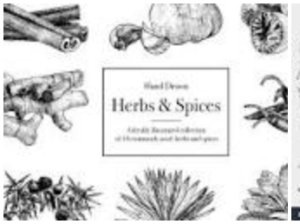By Catharine L. Kaufman—a.k.a. The Kitchen Shrink
No sooner have we begun to figure out some ways to live life in the midst of the COVID-19 pandemic, that public health gurus are jumping the worry-gun trying to guess what flu strains brewing in Asian virus cauldrons will be headed our way during this fall and winter flu season.
While most scientists tend to aim their suspicions at giant China, they know only too well that smaller countries in its vicinity might also be this year’s incubators of the latest flu viruses. Their vigilant pessimism makes it rather difficult for the rest of us to look forward to nature’s fall colors, Halloween fun, Thanksgiving family gatherings, and the bright lights and festivities of the winter solstice.
No matter how hard we try to ‘go with the flow’ as the airwaves fill with familiar songs, we are jerked back to reality by disruptive coughing, sneezing, and other sounds of sick bodies’ distress. Made worse by the necessity of protective masks, the social distancing that deprives us of healing human touch, personal  administration of cold compresses on feverish brows, and especially of being comforted by hand-served served chicken soup, tea, and other therapeutics.
administration of cold compresses on feverish brows, and especially of being comforted by hand-served served chicken soup, tea, and other therapeutics.
My Grandmother, who had lived through the notorious Influenza Pandemic of 1918, tirelessly nursed sick family members and friends both old and young back to health throughout her life, all the time miraculously managing to escape the various deadly viruses popping up in her vicinity. She attributed her immunity to the countless old-fashioned home remedies concocted in her kitchen, mostly from scratch. I can still hear her pounding on the well-worn mortar and pestle as she pulverized fresh ginger and turmeric roots, and filled the house with the pungent odors of ground garlic cloves and mint leaves. Grandma’s arms reminded me of a wrestler; they remained firm and muscular in old age, probably due to her hand-squeezing dozens of oranges and lemons in our low-tech heavy glass juicer. Her olfactory sense remained keen, attesting to a lifetime spent foraging for, and combining medicinal herbs into healing teas.
 While possessed mostly by gifted members of my family, her skills were not uncommon among the women of her generation, having been handed down by ancestors who contributed their own creative therapeutic combinations of collected findings. Grandma’s gifts to us included some remarkable treatments. I have often wondered about these remarkable ancestral herbalists and healers who knew which plant was beneficial, for what and how the herbs, grasses, roots, and spices could best be used as remedies. Some alleviated symptoms, others shortened the duration of illnesses, while many became the basic compounds that form today’s modern pharmaceuticals.
While possessed mostly by gifted members of my family, her skills were not uncommon among the women of her generation, having been handed down by ancestors who contributed their own creative therapeutic combinations of collected findings. Grandma’s gifts to us included some remarkable treatments. I have often wondered about these remarkable ancestral herbalists and healers who knew which plant was beneficial, for what and how the herbs, grasses, roots, and spices could best be used as remedies. Some alleviated symptoms, others shortened the duration of illnesses, while many became the basic compounds that form today’s modern pharmaceuticals.
Archeologists have discovered evidence that Paleolithic cave dwellers had used plants for medicinal purposes. Evolving from caves to communities, most ancient societies blended wisdom with organic ingredients to form their own cultural apothecary of remedies. The healing system of Ayurvedic medicine emerged from the subcontinent of India based on the principle of maintaining balance between mind, body, and spirit as the path to wellness. Some Ayurvedic herbs and spices revered for thousands of years by ancient practitioners for their Herculean healing powers are still treasured by modern medicine men and women to defeat some of today’s relentless viruses and bacteria. One of the most effective is Ashwaganda, an immune boosting spice; others include Cumin, an antimicrobial spice linked to keeping food-borne illnesses in check; Licorice Root, an antiviral and antibacterial shield against infections, which soothes sore throats and acts as a phlegm expectorant; Turmeric, the golden boy of Indian spices with potent antioxidants to ratchet up immunity; and its close cousin Ginger, which is both a soothing tonic and invigorating stimulant. Ginger is, in fact, a super spice known to give a warm bite to comfort food and drinks, while easing scratchy throats, reducing fever and mucous production, and relieving congestion. A recent study showed fresh ginger’s amazing defensive ability to prevent viruses from sticking to cells.
Around 1500 B.C.E., ancient Egyptians discovered plants’ medicinal powers and produced one of the earliest records of herbal remedies titled Ebers Papyrus. Among the healing herbs included in that treatise and still used today as formidable weapons against viruses are Cubeb pepper and Frankincense to ease larynx and throat infections, Fenugreek and Poppy to soothe respiratory ailments, Mint to stop nausea and vomiting, onions to ward off colds and, of course, the mighty garlic, which was given daily to the slaves who built the Pyramids to boost vitality, and purge the body of toxins.
and still used today as formidable weapons against viruses are Cubeb pepper and Frankincense to ease larynx and throat infections, Fenugreek and Poppy to soothe respiratory ailments, Mint to stop nausea and vomiting, onions to ward off colds and, of course, the mighty garlic, which was given daily to the slaves who built the Pyramids to boost vitality, and purge the body of toxins.
Eventually, herbal wisdom found its way to Asia—although it took until the Shang Dynasty that ruled between the 16th and 11th centuries BC for traditional Chinese medicine to become established as an arsenal of healing botanicals ready to be used against colds and flus. It took even longer for Traditional Chinese Medicine to become known throughout much of the world, and to be practiced with great success in many countries, including the United States.
Health food aficionados are familiar with Astragalus, and tart little Goji berries as rich sources of antioxidants, Vitamin C and zinc—a combination often prescribed to boost immunity. Ginseng, a multi-purpose root, has been found to increase the lifespan of cells, while wild yam helps cure a persistent cough. White Peony root clears out bacteria that causes gut infections. Wheatgrass annihilates free radicals, while Elderberry syrups and tinctures relieve blocked sinuses.
Homegrown herbal contributions from Native American tribes and early American root doctors who used native plants against colds and flu were found to be very effective in protecting indigent and pioneer populations during brutal winters. Lobella nicknamed pukeweed was used as an expectorant (much like modern day Mucinex); feisty Cayenne pepper relieved sinus congestion; Goldenseal eased scratchy throats; Echinacea has been found to empower the immune system and was used as an ounce of prevention; and Lomatium root is still used to help shorten the duration of respiratory infections.
Taking a page from the teaching tomes of Hippocrates—the ancient Greek father of modern medicine—“…let food be thy medicine,” here is my own favorite anti-flu remedy: a delicious healing broth passed down from my beloved Grandma.
Healing Chicken Bone Broth
3-pounds chicken bones, meat attached (organic)
2 ½-quarts spring water
5 garlic cloves, whole
2 onions, quartered
3-tablespoons fresh squeezed lemon juice
1-inch piece each fresh ginger and turmeric roots, peeled—or in organic powered form
1 bay leaf
3 celery stalks, coarsely chopped (including leafy tops)
3 carrots, sliced 1-inch pieces
Sea salt and Cayenne pepper to taste
Add ingredients to large stockpot. Bring to a boil, then simmer covered for several hours (8-24). Let cool. Strain with fine sieve. Reserve carrots to add to broth. Refrigerate in Mason jars.

